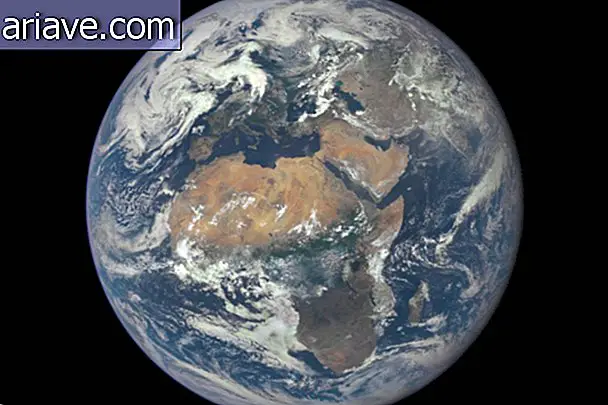Curiosity spacecraft reaches Mars and starts NASA missions

If in 1969 the world stopped to see NASA Americans stepping on lunar soil, this morning it was the turn to do the same with the Red Planet. It is not yet a manned mission, but the Curiosity spacecraft has reached Mars and will now be responsible for capturing incredible images and, especially, collecting and analyzing rock samples and other materials that can be found there.
Martian Surface Landing
On November 26, 2011, Curiosity was launched from Earth towards Mars. It was more than 250 million kilometers between the two planets until the landing was made at dawn on Monday. According to the G1, until the landing was actually completed, what scientists call "seven minutes of terror" occurred. This is because the atmosphere of Mars is different from Earth's, making the landing riskier.
NASA revealed that it entered the planet at speeds close to 20, 000 km / h, which makes the slowdown quite complicated. Fortunately, there was no damage to the Curiosity robot probe, which can now proceed with its common tasks. In the video above this paragraph, you can check out the commemoration of NASA scientists who were at the Jet Propulsion Laboratory.
Curiosity Missions
The robot spacecraft will have several goals to accomplish during its "stay" on Mars. One of the main ones is to evaluate soil and weather conditions so that scientists can know if there is a chance that the Red Planet will harbor some form of life - or even if it was possible at some point in the past. This includes a complete and detailed description of Martian geology.

It is also extremely important for scientists to obtain more complete data on the influence of water on the planet's development, as well as to identify the phases of the cycle that currently occurs with water that exists there. Finally, Curiosity must detect levels and sources of radiation that exist on the surface - which will be essential for the answers to previous questions to be found.
The first phase of the project lasts just under two years, but the spacecraft is expected to stay for a few more years (estimated a decade) tracking the surface of Mars. It is on this basis that NASA scientists and several other labs will be able to say whether life really existed on Mars. This would be essential to finding the answer to one of humanity's oldest questions: "Are we really alone?"
What is the power source of the probe?
In contrast to pre-Curiosity probes, the newest inhabitant on Mars is not powered by solar panels. In their place, the robot probe has plutonium generators, which have the capabilities to provide the power needed for at least 14 years. With this, the NASA vehicle has guaranteed the energy needed for the mission.
Curiosity's first photo
Shortly after confirmation of arrival on Mars, a photograph was also received that had been taken from Martian soil. The image was taken by a rear camera - the same one that will be used to ensure that no accident occurs with Curiosity as it travels the planet.

It's still a low-resolution photograph because it will take about a week before the first high-definition panoramic image is sent to NASA computers. When this happens, make sure that the Tecmundo will publish the result to all science and astronomy enthusiasts.
Source: G1, The Verge, Apollo 11, Los Angeles Times and CNN











